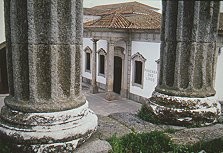
 |
In Evora, we stayed at the Pousada Dos Loios. The Pousada has been installed in the former monastery, known as the Convent of the Lóios (aka Convento de São João Evangelista), founded in 1485-1491. Important features are its neo-classical façade (1745-1754) and its cloister, which has four arcades and two floors. The lower one is built in the Manueline style and the upper gallery in the Renaissance style. The building is an integral part of the Historic Centre of the city of Évora, a World Heritage Site. |
| This Hotel has a wonderful history and location near the city of Coimbra, the old university capital of Portugal. It was here in 1808 that the Duke of Wellington, commander of the British Army, stayed several nights in his pursuit of ridding Portugal of Napoleon's troops (coming in from Spain) and it was here that one of Portugal's famous love stories came to a bitter end with the killing of Ines de Castro, mistress of Prince Dom Pedro the Cruel and mother to his three illegitimate children in 1355. Her death was ordered by Pedro's father King Afonso IV (partly because she was the daughter of one of the most powerful men in Spain). The story goes that the tears she shed became a fresh water stream from the fountain of love. You can still see the rocks red from her blood. | 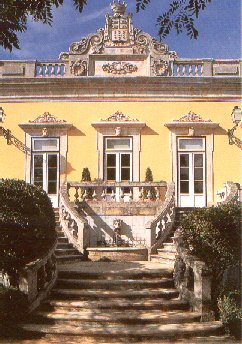 |
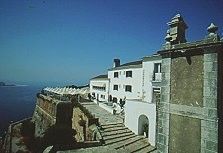 |
This Pousada is installed in the Castelo de São Filipe, a fortress begun in 1582 on the orders of Philip II of Spain (I of Portugal to fend of a British invasion). Its architect was the Italian Filipe Terzio. From the top of its ramparts, there is a panoramic view over Setúbal, the estuary of the river Sado and the Tróia Peninsula. Inside the chapel, which overlooks the fort, visitors can admire the azulejos (Portuguese ceramic tiles), signed by Policarpo de Oliveira Bernardes (1736), which depict scenes from the lifes of Saint Philip and the Virgin Mary. |
| This ancient castle in the wine-growing region of Palmela, was taken from the Moors by King Dom Afonso Henriques in the 12th century, and was an outpost in the defense of Lisbon (40 Km away) due to its strategic position. In the 15th century it became a convent and it is today classified as National Heritage. The white-walled Pousada was built inside the castle, the cloisters of the convent having been integrated into the building. | 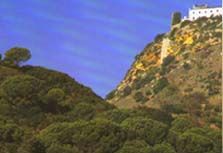 |
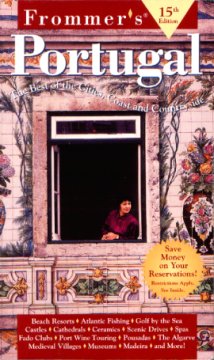 |
Traveling to Portugal would have been very difficult without these two books with us. While they do take up a bit of precious space in the luggage and carry on bags, they are essential books to take, especially the Frommer's book because it goes into quite a bit of detail on where to stay and what to see. I like Rick's style better, and his travel tips are great, (you should see his travel shows) but his book devotes very little to Portugal. |  |